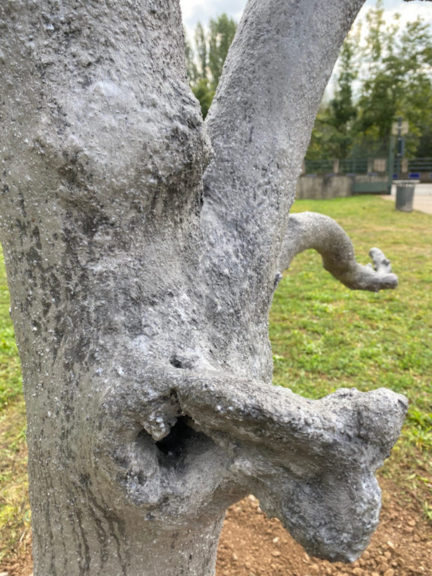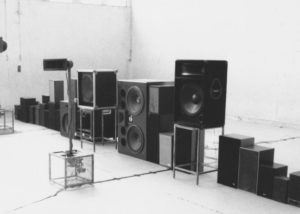Printemps Silencieux
LISTENING ROOM IN 2162, ENAPOLIS MUSEUM
Printemps Silencieux (Silent Spring) takes us to the year 2162 in the city of Enapolis, where the inhabitants are walled in and have never known or even felt the presence of the ‘outside’. Upon entering a room of the city museum, the visitor can read the following label:
‘The Enapolis Museum regularly excavates our basements. We find a number of objects, mostly damaged, obsolete or unknown. Among them, a device that could finally be restored and explored. It appears to have belonged to Gaëtan Gromer, a 21st-century sound artist who lived on the Enapolis construction site. It is likely that, throughout his life, the artist collected a considerable database of field recordings recorded by himself or by collaborators. According to what we have discovered about this device, the practice of field recording consisted in particular of recording, in the open air, sounds produced by human activities and/or by the natural environment.
This exceptional document from the beginning of the 21st century allows us to give you the opportunity to listen to these astonishing ‘soundscapes’ composed of typical sounds of the environment of this distant time and which have probably all disappeared in 2162.
The title was inspired by an unfinished work by the artist referring to a prophetic text written in 1962, exactly two centuries ago, by an author named Rachel Carson.
NB: This work is part of the cycle Demain c’est loin, it can be exhibited with the four other creations: Scintillements, Unedo, Sans faire de Vagues…, Enapolis
Created for the 2022 Ososphere festival – Strasbourg



























